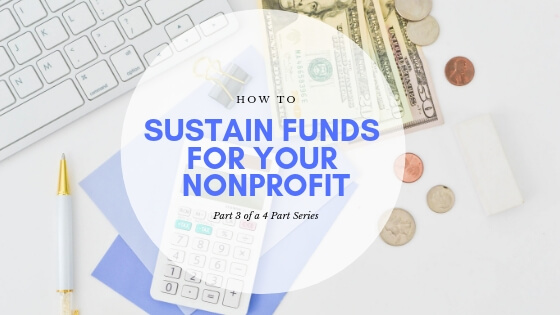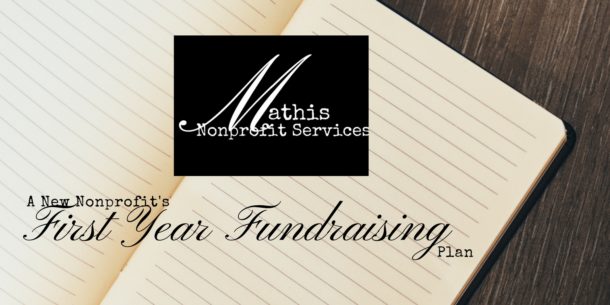Welcome back! We are in the middle of a four-part series about sustaining funds for your nonprofit. If you need to catch up, you can find part one here and part two here. For me, sustainable fundraising is like a romantic relationship. We’ve gone through meeting and courtship and now it’s time to take it to the next level.
Asking- Stage Three of the Donor Funnel
We are now in the commitment phase of the relationship. No matter if the commitment is getting down on one knee or “Hey, let’s move in together”, you have come to the point in the relationship where you know, like, and trust each other. The same is true for your donors. They know you, like you, and trust you. They have a connection to your mission and want to really support you. And likewise, you are understanding your donor’s mindset.
What does asking look like?
Asking can include a monetary gift or some other action that moves them closer to being a donor. In this stage, your nonprofit needs to be clear on where the money is going and how you are spending the money. You also have to make sure the person understands how they are making a difference in the lives of the people you serve. These are key. Usually, if you don’t get the donation, it’s because one or more of these things were not clearly relayed to the person or they just weren’t into you. (You’ve heard the line, “It’s me, not you”).
I think it’s important to go over some mindset items that I hear a lot when people are requested to ask someone for money.
Mindset #1: I’m begging!
Truth: People have a core need to give. Yes, we are generous at heart! We feel connected to something larger than ourselves, it makes us happier, more satisfied and it gives us pleasure. Psychology Today has an article that said this on the subject:
“A study this year funded by the Women’s Philanthropy Institute found that giving is positively related to life satisfaction, and the more people give (as a percentage of their household income) the more satisfaction they feel. A 2008 study conducted by researchers from Harvard and the University of British Columbia found that spending money on others leads to lasting improvements in people’s overall happiness.”
And this:
“And a 2007 study published in the journal Science found donating to a charity activates neural activity in areas of the brain that are linked to reward processing – the same areas that are activated by pleasures like eating and sex.”
How can I argue with science? It’s not begging when people want to give.
Mindset #2: People don’t want to give.
Truth: People DO want to give. Here’s the thing. They don’t give if they aren’t asked to give. And people don’t want to be “sold to” when asked to give. Keep the sleazy tactics at home.
It’s also important at this point to go over how to ask. (And this applies to any ask, not just money).
An ask that gets results has two components:
- An actual question: Would you give/volunteer/come to the open house?
- A concrete step that is actionable: Would you be able to give $50 to our organization today/ volunteer on our Gala committee for 10 hours a month until the Gala?
If you don’t get what you are asking for, more than likely you didn’t actually ask for it.
So, what if you get an actual no.
What then? Well, a no or a maybe is a good time to find out more about the donor. When you get an objection, follow this procedure:
- Ask for clarification of the objection so you can understand it.
- Restate the question/objection and validate the concern.
- Answer the objection.
You may need to keep a list of common and specific objections and practice the answers to the objection so you aren’t blindsided.
What activities are good for asking?
Let’s talk about actual activities your nonprofit can do to ask people to donate. I’ve got just a few common ones.
- Ask people to donate face-to-face.
- Appeal letters. (You can find article number one of the Appeal Letter series here.)
- Events
- Online Giving
- Annual Report
- Get creative. How can you ask for what you need?
Take Action
- What can you do right now to cultivate your prospects? Tell me in the comments or join the conversation on Mathis Nonprofit Services Facebook page or in the group At the Top: Small Nonprofit Leaders.
- To go deeper into the subject of sustainable fundraising, read the book The Eight Principles of Sustainable Fundraising by Larry C. Johnson, CFRE.* I have read the book and it really is the fundamental principles to sustain your fundraising efforts.
*The affiliate link takes you to Amazon as a convenience to order. I get a commission of the sale when you use the link. As always, when I recommend something, it’s because I truly believe in it. When you support the affiliate, it helps me bring free content to you.


 Most nonprofit leaders lay awake at night trying to figure out how to fund their mission.
Hi! I'm Alesha.
I teach sustainable fundraising in a way that they can take action today so they can serve their clients.
I can help you move from just getting started funding your new nonprofit to gaining confidence in your fundraising and building relationships to knowing what works for your organization and looking at the infinite game when it comes to funding. I’ve worked with nonprofit Founders and written the book I HAVE MY 501(C)3! NOW WHAT?!? Your Blueprint to Starting Your Nonprofit Without Being the Sole Funder that lays the foundations for funding in a new nonprofit.
I’ve worked in Development (Fundraising) Departments in large organizations and I know the no cost, low-cost methods they use to bring in funding. I bring those sound strategies to the nonprofits I serve.
Most nonprofit leaders lay awake at night trying to figure out how to fund their mission.
Hi! I'm Alesha.
I teach sustainable fundraising in a way that they can take action today so they can serve their clients.
I can help you move from just getting started funding your new nonprofit to gaining confidence in your fundraising and building relationships to knowing what works for your organization and looking at the infinite game when it comes to funding. I’ve worked with nonprofit Founders and written the book I HAVE MY 501(C)3! NOW WHAT?!? Your Blueprint to Starting Your Nonprofit Without Being the Sole Funder that lays the foundations for funding in a new nonprofit.
I’ve worked in Development (Fundraising) Departments in large organizations and I know the no cost, low-cost methods they use to bring in funding. I bring those sound strategies to the nonprofits I serve.